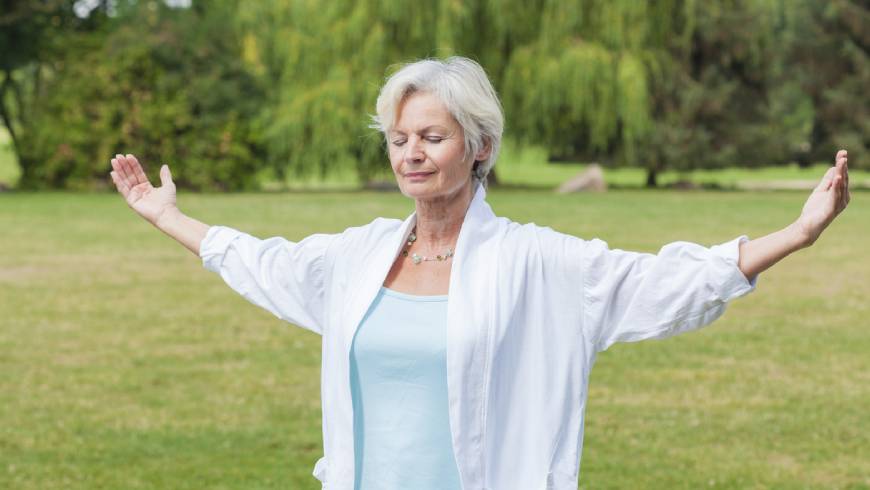How much exercise should you be doing for your age?

It doesn’t matter what your age is. Sometimes, it’s just so hard to get off social media and go outside, especially if you’re feeling a little unsure about what type of physical activity will give you best bang for your buck!
No matter how old you are, 2 ½ to 5 hours of activity every week is recommended. It sounds like a lot, but the Department of Health, as a guide, wants every adult Australian up to the age of 64 doing at least 150 to 300 minutes of “moderate intensity” physical activity, or 75 to 150 minutes (1 ¼ to 2 ½ hours) of “vigorous intensity” physical activity.
You can mix it up with an equivalent combination of both moderate and vigorous activities, but the message is pretty clear — you need to keep your fitness up as you get older.
So, what exercise or movement should you be doing? To help kick things into gear, Choosi delves into the best types of exercise for your age group. It’s important to know your limitations, and always chat to your health professional before undertaking any type of fitness program, and last but not least, use your common sense!
In your 30s: ramp up cardio to offset muscle loss

You’re probably realising that you need to be a little more prepared when it comes to life and planning for your future at this stage of life, and it’s no different for your exercise regime. After hitting your peak in your mid-20s, your muscle mass, power, and strength all start to decline in your mid-30s if you don’t exercise enough. If that’s not a reason to get off the couch, we don’t know what is.
The good news is that plenty of basic cardiovascular exercises like walking, running and cycling can slow your physical decline as you get older, and they don’t require an expensive gym membership!
“But I work long hours at the office!” we hear you cry. Simple — just take little moments to be active. Focus on incorporating incidental exercise into your routine and climb the stairs instead of using the elevator. Cycle or walk to work a couple of days every week. Or even jump off your bus or train one stop early and then walk the rest of the way. The world is your gymnasium!
In your 40s: focus on diet and add in resistance training

Continuing your usual cardiovascular exercises into your 40s is essential to stave off the impact of serious illnesses and diseases that could impact you later in life. In fact, do enough and it can strengthen your heart health, lower your blood pressure and cholesterol, and even reduce your risk levels for diseases like diabetes, Alzheimer’s, and some types of cancer. Not bad for a walk in the park!
Professor Clare Collins from the University of Newcastle says that women in their late 40s are likely to gain weight, even while following the Australian Dietary Guidelines. This means focusing on exercise becomes even more important as you hit your 40s and beyond.
You’ll want to ramp up your resistance training as your muscles are more susceptible to deterioration in your 40s — we know, it blows! Muscle-building training can involve weight lifting, using free weights like kettle bells, as well as rowing.
Don’t forget to protect your back when doing resistance and muscle-building training, especially if it’s been a while between gym sessions!
In your 50s-60s: try new things and take care of your bones

Think just because you’re almost approaching retirement age that you don’t need to exercise? Think again! It’s actually important to stay active now more than ever to ensure that you lower the risk of an illness or injury that could leave you incapacitated or unable to support your loved ones.
If you’re not keen on weight lifting, or the thought of running makes you weak at the knees, why not try a more holistic approach to wellness with Tai Chi? Swimming is also a low-impact option that’s cheap and fun.
Some people in their 50s might find themselves working less, so this is a great opportunity to join community fitness groups. You might try hiking, rock-climbing, or even adventure travelling. With many online groups and government sites catering specifically to exercise for the over-50s and beyond, you’re bound to find one that suits you!
And remember: retirement shouldn’t mean lazing around all day (not that you ever would!) Staying fit while heading towards your retirement years is crucial so you can live a long and happy life after work. Find an activity that excites you, like cycling, dancing, golfing or yoga — and stick to a routine. If you’re unsure what fitness you should be doing, speak to your doctor first.
Remember that your risk of developing osteoporosis also increases as you age, so take steps to prevent its onset by eating a healthy and varied diet and doing regular strength training and weight-bearing activities.
There’s no time like the present to get up off the couch and dive headfirst into some good exercise habits, so why not use the warmer months as your kickstarter to a healthier, more active lifestyle? Your future self will thank you — trust us!
Taking care of yourself goes beyond exercise, and it’s important to protect yourself and your family against the unexpected. If you’re thinking about whether you need life insurance, or if it’s time to review your current policy, compare life insurance quotes online to make sure you’re getting exactly what you need.
19 Nov 2019